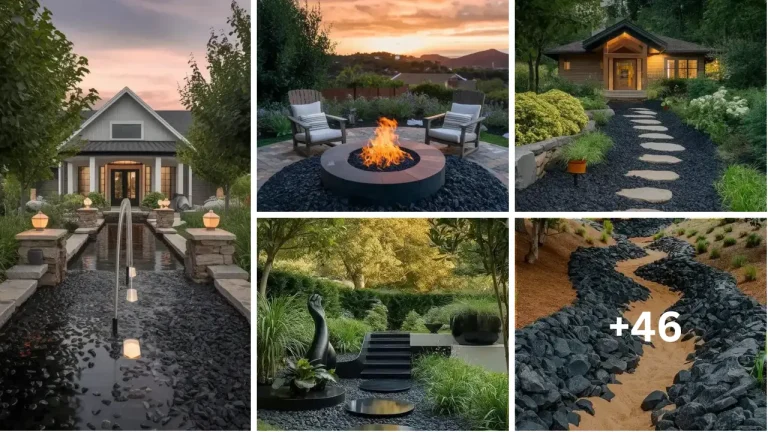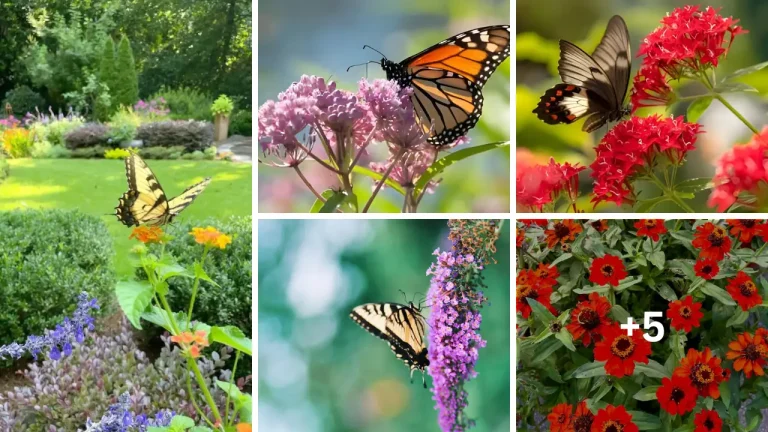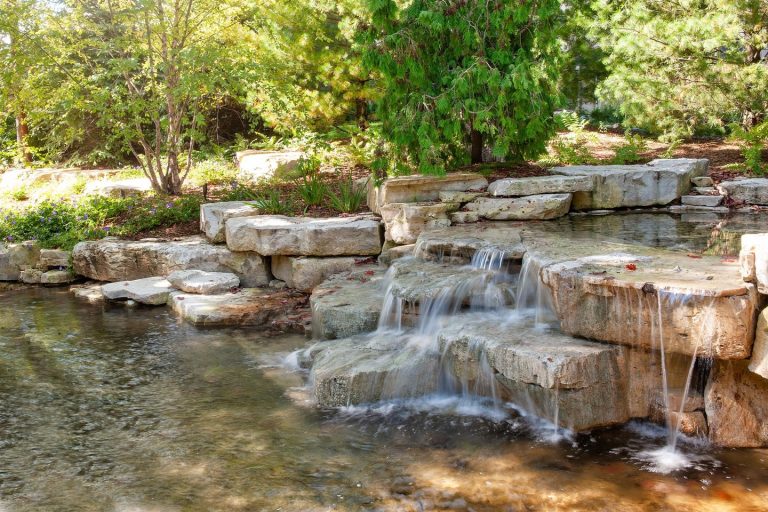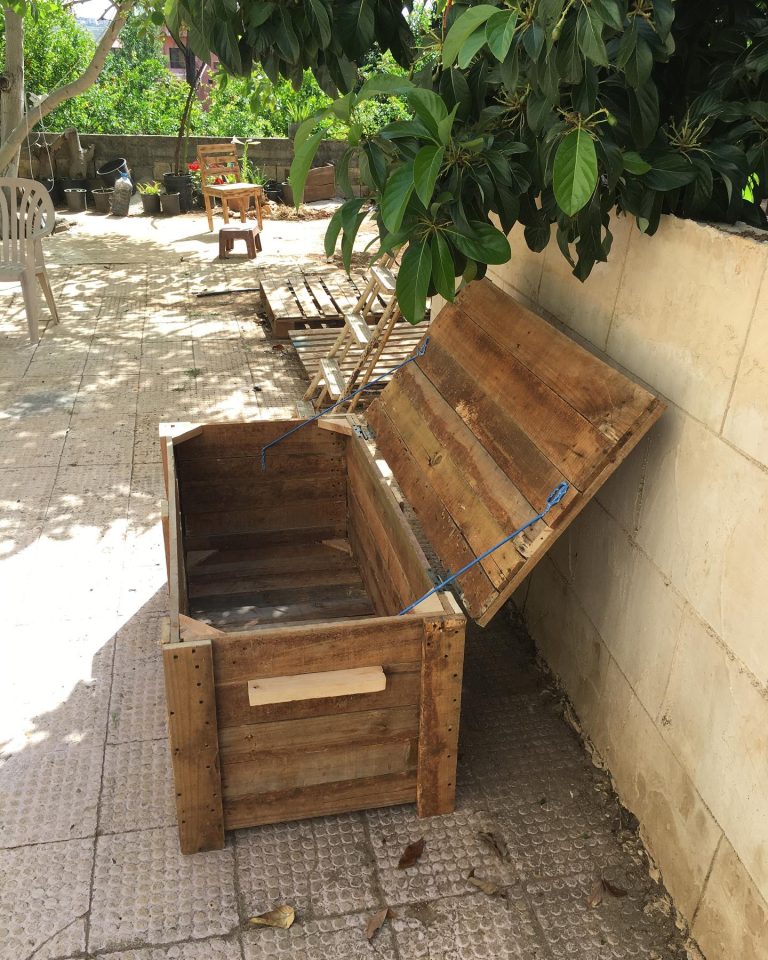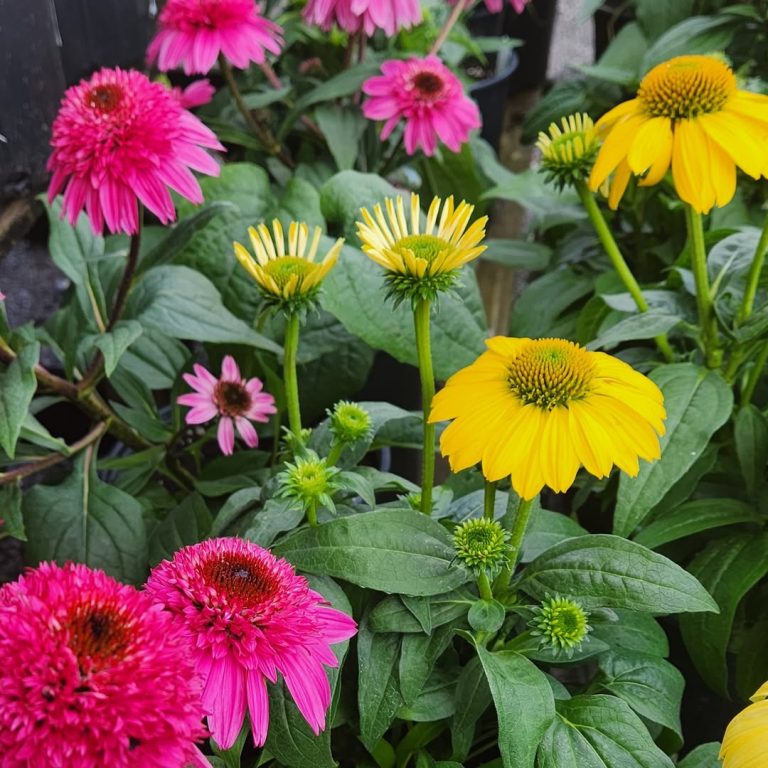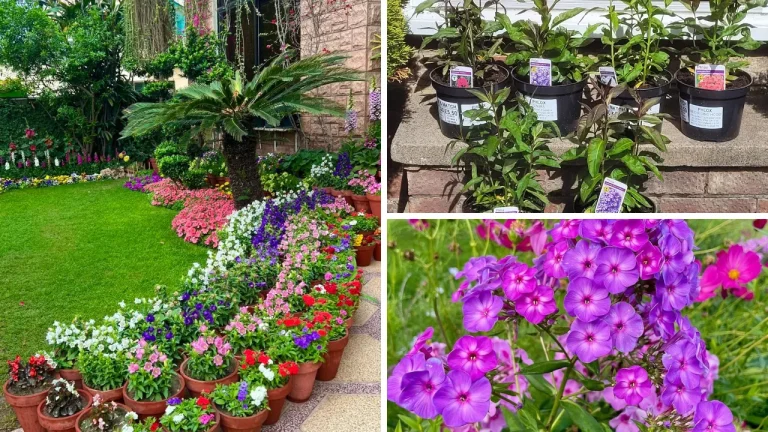23 Rainscaping Ideas to Transform Your Outdoors
Rainscaping is not only about managing rainwater efficiently; it’s about enhancing the beauty and sustainability of your outdoor space. Whether you’re looking to reduce water runoff or create a stunning landscape, these 23 rainscaping ideas offer both practical and aesthetic benefits for your home. From rain gardens to green roofs, there’s an idea for every yard. Read on for tips that will inspire you to bring nature into your backyard while helping you manage rainfall in a sustainable way.
1. Create a Rain Garden for Beautiful Water Management
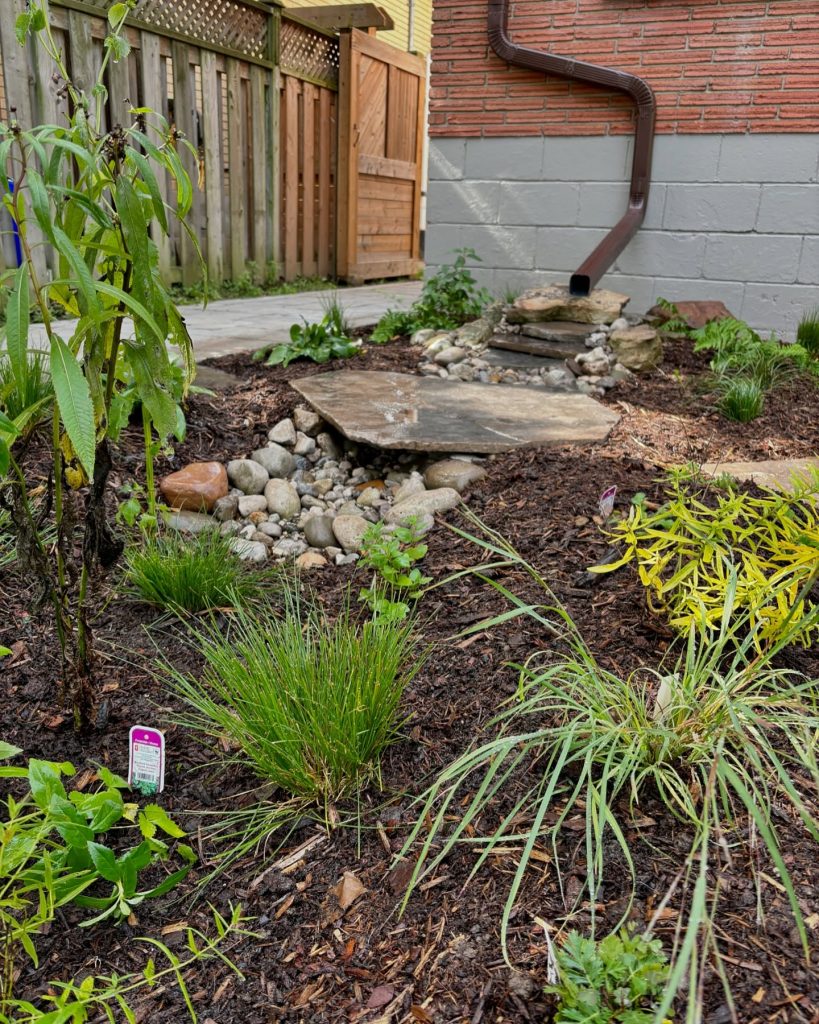
A rain garden is one of the most effective and visually appealing ways to manage excess rainwater. It’s designed to capture rainwater runoff from impervious surfaces like rooftops, driveways, and sidewalks. The garden is usually planted with native plants that thrive in wet conditions and help absorb rainwater naturally.
Rain gardens are perfect for areas with poor drainage and can reduce water pooling and flooding. You can design the garden with a variety of beautiful plants, such as wildflowers, ferns, and grasses, which help filter and cleanse the water as it drains. Beyond just functionality, a well-designed rain garden enhances your yard’s beauty by creating a lush, vibrant focal point.
Rain gardens are easy to customize and can be tailored to suit your garden’s aesthetic, whether you prefer a more natural look or something modern and structured. They’re ideal for homeowners looking for a low-maintenance, eco-friendly option for managing rainwater while adding to their landscape’s visual appeal.
2. Build a Dry Creek Bed for Natural Drainage
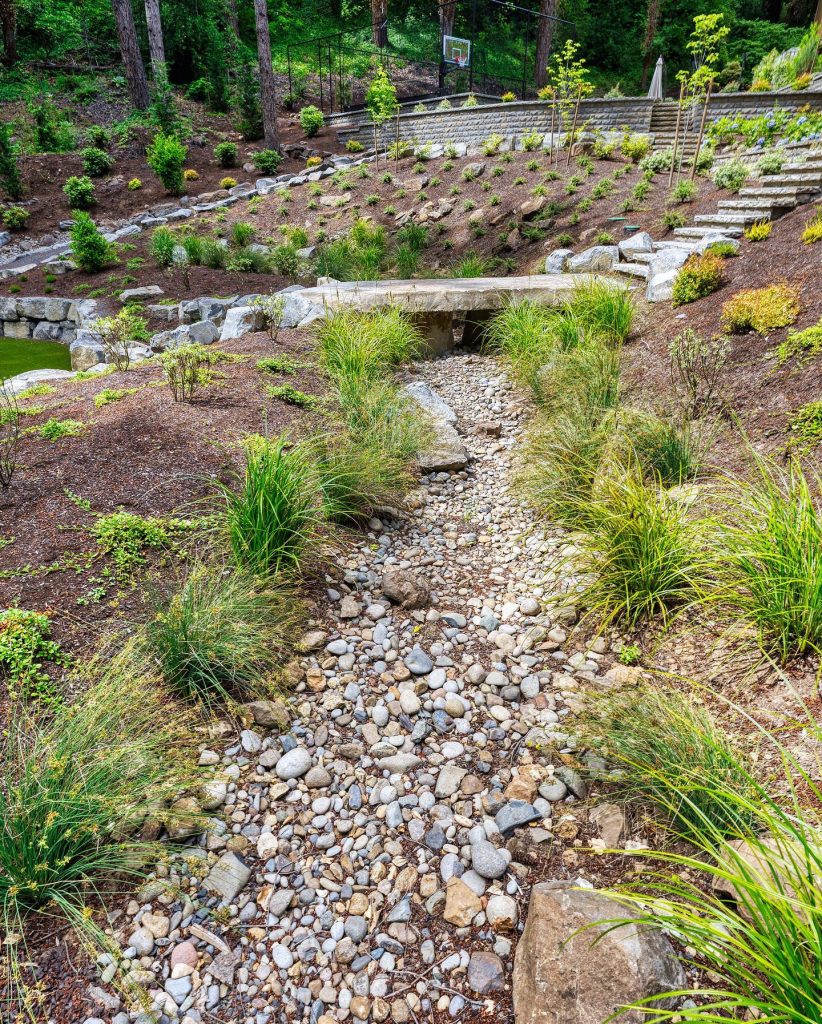
A dry creek bed is a versatile and stunning solution for directing rainwater away from problem areas. This type of rainscaping involves creating a trench that’s lined with gravel, rocks, or river stones to guide water flow across the landscape. Dry creek beds can be placed in low-lying areas where water naturally collects or along the perimeter of your yard.
While dry creek beds effectively prevent flooding and soil erosion, they also provide a beautiful, natural aesthetic. By adding strategically placed plants along the edges of the creek bed, you can create a serene, nature-inspired feature that complements your outdoor space. Choose drought-resistant plants for ease of maintenance and to ensure the longevity of your design.
The best part about dry creek beds is that they blend seamlessly into your landscape, providing drainage without disrupting the natural flow of water. They’re a perfect way to combine functionality and beauty, offering both water management and a visually attractive outdoor feature.
3. Install Permeable Paving for Sustainable Patios
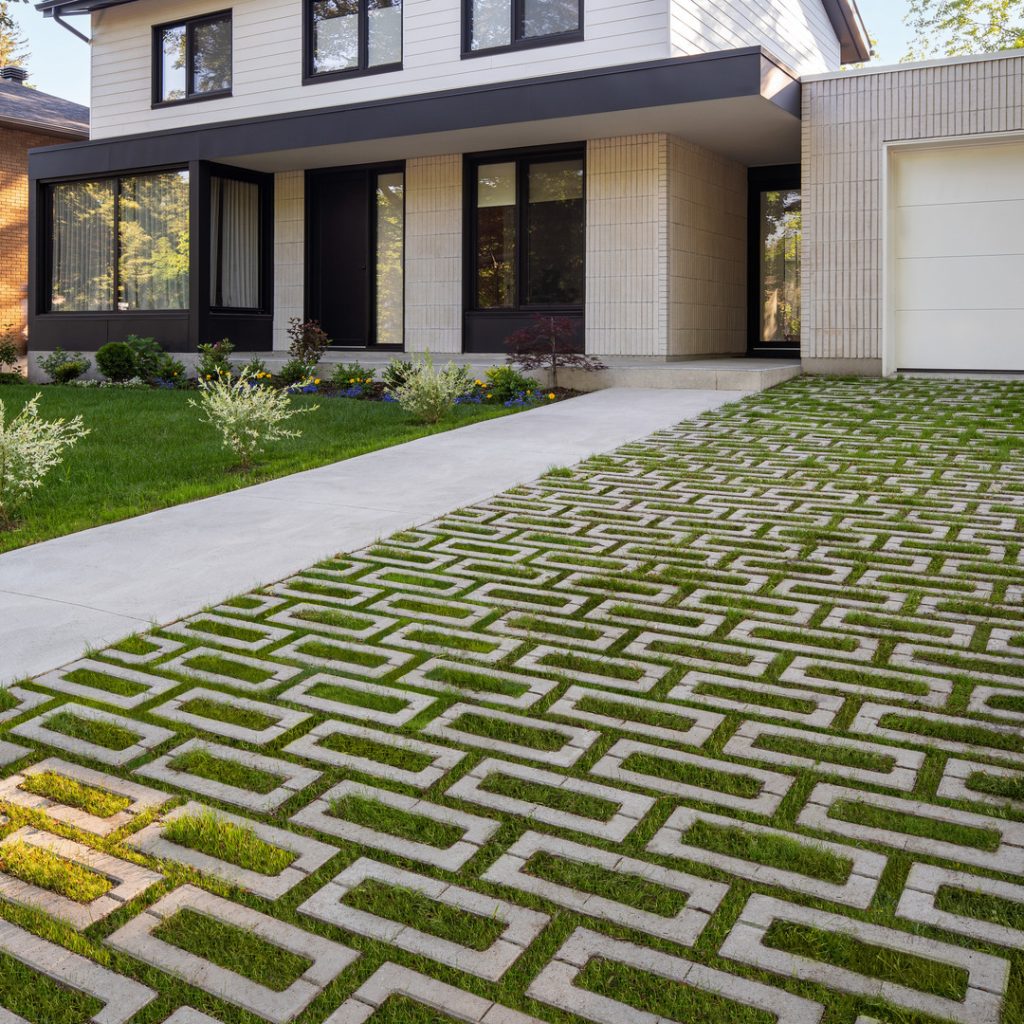
Permeable paving allows water to pass through the surface, soaking into the ground instead of running off. This makes it an ideal solution for patios, walkways, and driveways in areas that receive heavy rainfall. By opting for permeable materials, such as gravel, permeable concrete, or interlocking pavers, you can significantly reduce runoff and improve water absorption.
Not only does permeable paving manage rainwater effectively, but it also promotes a sustainable, eco-friendly outdoor space. The water that filters through these materials replenishes the groundwater supply, preventing issues such as flooding or erosion. Additionally, permeable paving materials come in a variety of colors, textures, and styles, making it easy to create a modern or traditional patio that suits your aesthetic.
When selecting permeable paving, consider the climate and soil conditions of your area. This type of paving requires proper installation to ensure maximum drainage and to prevent any long-term issues.
4. Add a French Drain for Efficient Water Flow
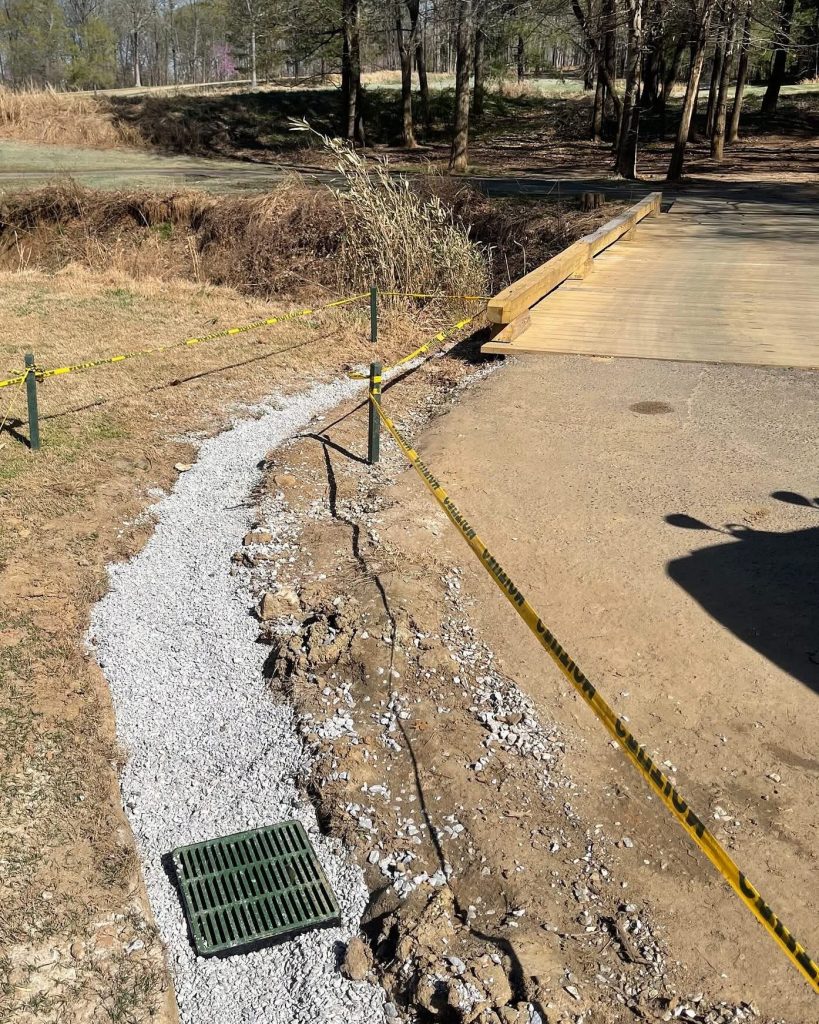
A French drain is a highly effective solution for managing excess water in areas prone to flooding or pooling. It consists of a trench filled with gravel and a perforated pipe, which redirects water away from your yard and toward a designated drainage area. French drains are particularly useful for sloped yards or regions where water tends to accumulate after rainfall.
The beauty of a French drain is its simplicity and low maintenance. Once installed, it works automatically, directing water to prevent erosion, waterlogging, or damage to your home’s foundation. You can cover the drain with grass, decorative stones, or other landscaping elements to ensure it blends seamlessly with the rest of your outdoor design.
While it’s an effective tool for managing water, a French drain can be customized to suit various outdoor styles, ensuring that it fits naturally into your landscape.
5. Use Rain Barrels for Water Conservation

Rain barrels are an excellent way to capture and store rainwater for later use in your garden. By connecting the barrel to your downspout, you can collect rainwater that would otherwise flow into the gutter system. Rain barrels come in a variety of shapes and sizes, and they’re available in decorative styles that can complement your backyard décor.
Utilizing rainwater for irrigation is not only a sustainable practice but also a cost-effective way to maintain your garden during dry spells. With a rain barrel, you can water your plants, flowers, and lawn without relying on municipal water systems. The stored water is often better for plants, as it doesn’t contain chlorine or other chemicals typically found in tap water.
Rain barrels are easy to install, and many models come with features like spigots for easy dispensing, screens to filter debris, and overflow valves to prevent water from spilling over. They’re a great choice for anyone looking to conserve water and reduce their environmental footprint.
6. Plant a Bioswale for Landscape-Based Water Control

A bioswale is a landscape feature designed to slow, capture, and filter rainwater runoff. Typically planted with native plants, grasses, and shrubs, bioswales are designed to manage large amounts of water without overwhelming the landscape. They work by directing water into a natural depression, where it’s absorbed and filtered by the vegetation.
Bioswales are particularly beneficial in urban or suburban areas with impervious surfaces, such as roads and driveways. They not only help manage stormwater but also support local wildlife by providing a habitat for birds, insects, and other creatures. As an added bonus, bioswales can improve air quality and aesthetics, offering a lush, green space that helps reduce pollution.
Creating a bioswale in your backyard can transform a wet, underused space into a thriving, eco-friendly area that contributes to water conservation and wildlife preservation.
7. Incorporate a Green Roof to Absorb Rainwater
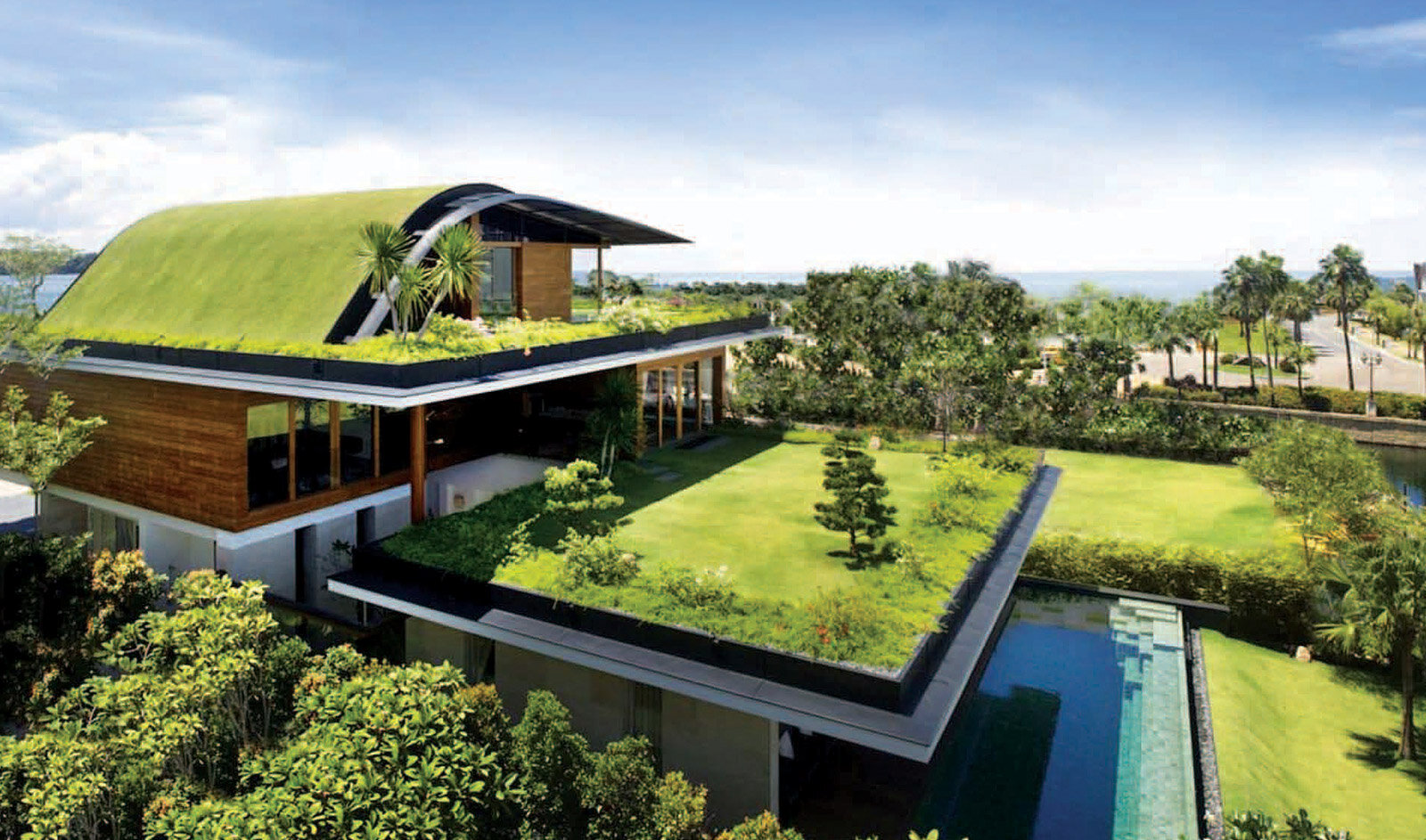
A green roof, also known as a living roof, is an innovative way to manage rainwater while creating a unique outdoor living space. Green roofs consist of a layer of vegetation planted on top of a building, typically covered with soil and moisture-retaining materials. They absorb rainwater, reducing runoff, and offer natural insulation for your home.
In addition to their environmental benefits, green roofs add beauty and texture to your home’s design. They create a peaceful, green oasis where you can relax and enjoy nature. Many homeowners are turning to green roofs for their ability to improve air quality, regulate temperatures, and enhance the overall appearance of their property.
While installing a green roof can be a more involved process, the long-term benefits make it worthwhile. If you’re interested in a sustainable and attractive way to manage rainwater, consider transforming your roof into a lush garden space.
8. Create a Permeable Walkway to Allow Rain to Soak In

A permeable walkway is an excellent way to manage rainwater while adding functionality and beauty to your yard. These walkways, made from materials like gravel, pavers, or porous concrete, allow water to filter through the surface and into the ground. They help prevent water from running off, thus reducing erosion and flooding.
Permeable walkways are versatile and can be used in a variety of outdoor settings, from garden paths to driveways. Not only do they offer practical drainage solutions, but they also enhance the aesthetics of your yard. You can design a walkway with various materials, colors, and patterns that complement your home’s style.
Incorporating a permeable walkway into your landscape design is an easy way to improve water management while adding a modern or rustic touch to your outdoor space.
9. Install a Rain Garden Fountain for Both Function & Beauty

Adding a rain garden fountain combines the benefits of a rain garden with the charm of a decorative water feature. The fountain can be placed in the center of a rain garden, where it can both capture and direct rainwater while serving as a focal point. A well-designed rain garden fountain will enhance the overall aesthetic of your outdoor space while contributing to efficient water management.
Fountains are available in many styles, from sleek and modern to rustic and traditional. You can choose a design that complements your garden’s overall theme, whether you’re going for a minimalist look or something more elaborate. Rain garden fountains can also attract birds and butterflies, enhancing the biodiversity of your landscape.
By installing a rain garden fountain, you create a stunning feature that manages rainwater while enhancing the tranquility and beauty of your outdoor retreat.
10. Add Gravel to Low-Lying Areas for Better Drainage
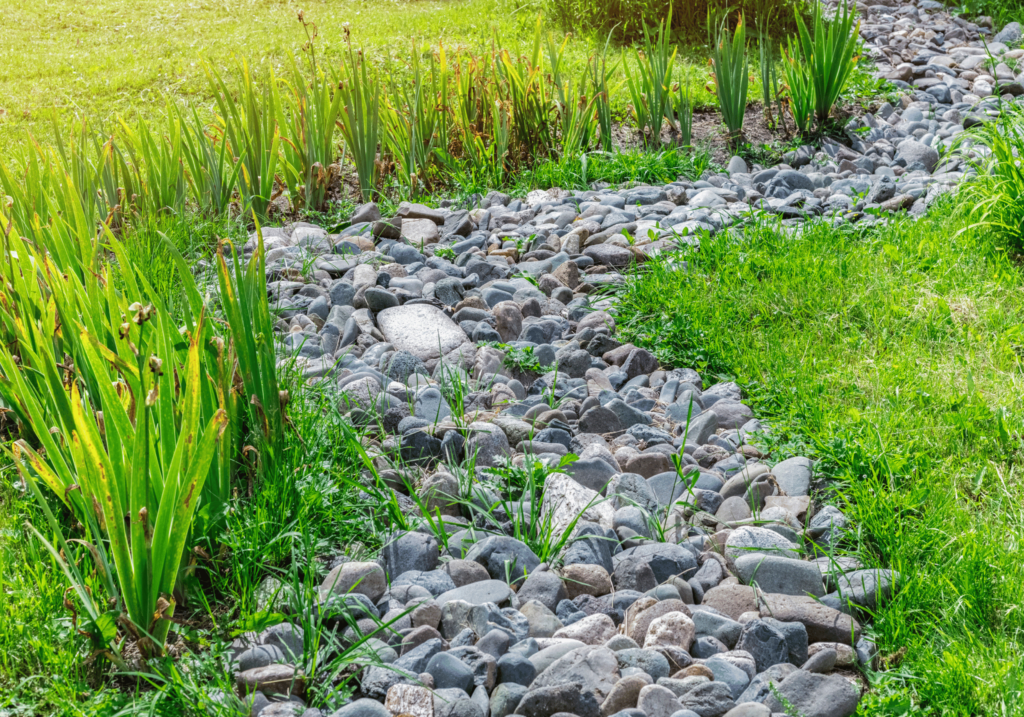
Gravel is an affordable and effective material for improving drainage in areas prone to water pooling. Adding a layer of gravel to low-lying spots in your yard helps create natural drainage channels that direct water away from problem areas. It’s a simple yet highly effective solution for preventing waterlogging and reducing erosion.
Gravel is highly versatile, and you can use it in a variety of ways, from filling depressions to creating gravel paths or even decorative dry creek beds. It’s also an excellent choice for areas with heavy foot traffic, as it prevents the ground from becoming too soggy.
When selecting gravel, consider choosing angular rocks that lock together better than rounded pebbles, which can shift and create uneven surfaces. With proper installation, gravel can help ensure your yard drains efficiently and stays dry during heavy rainstorms.
11. Build a Cistern to Store Rainwater for Future Use
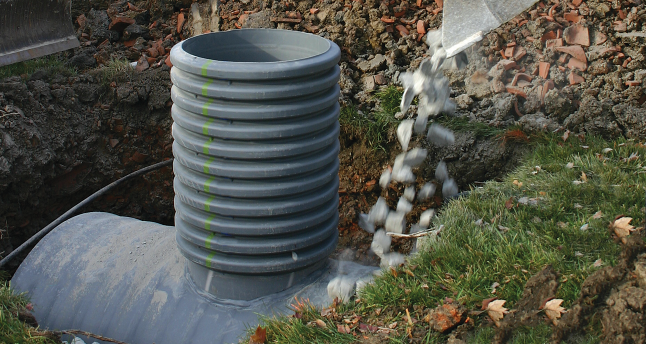
A cistern is a large container used to store rainwater for future use. It can be installed underground or above ground and can collect significant amounts of water from your gutters and downspouts. Cisterns are ideal for homeowners looking to harvest rainwater for irrigation or other non-potable uses.
Installing a cistern helps conserve water and reduce your dependence on municipal water systems, making it an eco-friendly and cost-effective solution. With a cistern, you can store water during rainy months and use it during dry spells, keeping your garden hydrated without wasting valuable resources.
Cisterns come in various sizes, and modern models are designed to be both functional and aesthetically pleasing. Some cisterns can be camouflaged or incorporated into your landscape design, ensuring they complement the overall look of your outdoor space.
12. Create a Rainwater Pond for a Natural Feature

A rainwater pond is a stunning and sustainable way to manage runoff while adding a beautiful, natural feature to your yard. The pond collects rainwater, which helps maintain its level during dry periods. Over time, it can become a habitat for local wildlife, including frogs, birds, and beneficial insects.
When designing a rainwater pond, consider the size and location of the feature. It should be placed in an area that naturally collects rainwater and is away from areas that could cause erosion. Adding aquatic plants to the pond helps improve water quality by filtering out contaminants and providing a healthy environment for wildlife.
A rainwater pond adds serenity and visual appeal to your backyard while serving as a practical solution for rainwater management.
13. Install a Green Fence for Erosion Control
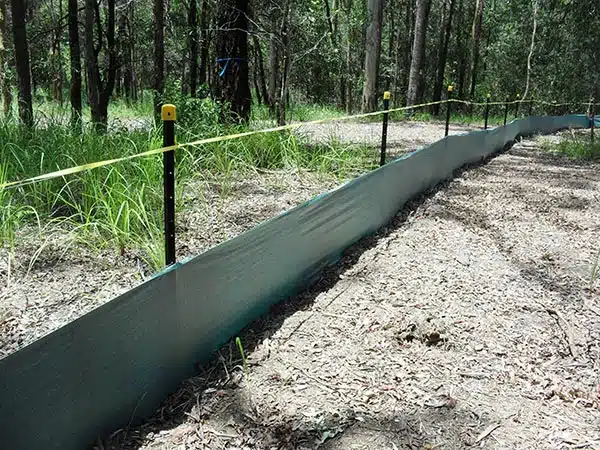
Green fences are an excellent way to prevent soil erosion while also improving the aesthetics of your backyard. These fences are often made from climbing plants like ivy, honeysuckle, or climbing roses, which grow up and over the fence to create a living barrier.
Green fences help manage rainwater by absorbing moisture and stabilizing the soil. They’re particularly useful in areas where the soil is prone to erosion after heavy rainfall. In addition to providing natural erosion control, green fences can offer privacy, reduce noise, and attract wildlife to your garden.
Whether you choose to grow vines on a metal frame or allow plants to climb on a wooden trellis, a green fence is a stylish and effective way to protect your landscape from the damaging effects of water runoff.
14. Install Rain Chains for an Elegant Water Feature
:strip_icc():format(webp)/rain-chain-bc9fb577-fa0a5d7075b2463fb21dea41750eba29.jpg)
Rain chains are a beautiful and functional alternative to traditional downspouts. Instead of water simply pouring out of a metal pipe, rain chains direct water from the roof to the ground in an elegant cascade. Available in various materials like copper, aluminum, or stainless steel, rain chains can complement your home’s exterior while offering a soothing sound and visual appeal.
Rain chains are easy to install and can be used to guide rainwater into a rain barrel or garden. You can also design your rain chain system to create a beautiful water feature that enhances your outdoor space. As the water flows, it creates a calming sound, transforming a rainy day into a relaxing experience. Additionally, rain chains can be customized to fit your aesthetic, from modern minimalist designs to intricate, decorative patterns.
By adding a rain chain, you combine practicality with beauty, transforming the way water moves through your yard while creating a captivating feature for your garden.
15. Use Gravel Mulch for Increased Water Absorption
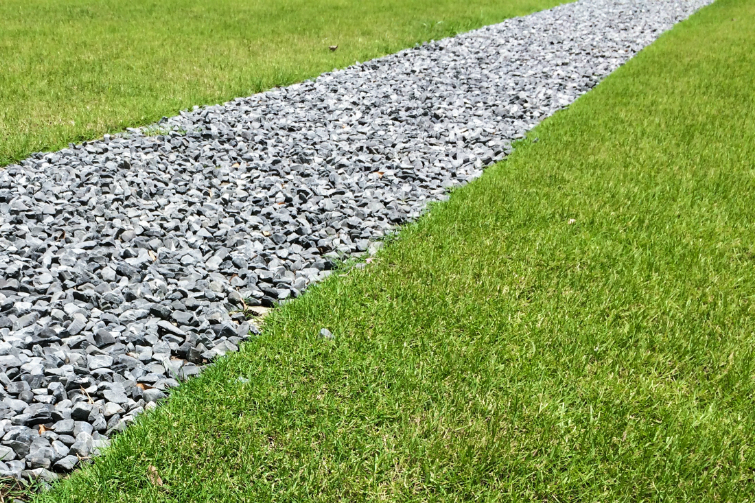
Gravel mulch is a smart way to promote water absorption in your garden while providing a clean and polished look. Unlike traditional organic mulch, gravel doesn’t decompose over time, making it a long-lasting and low-maintenance solution. It helps manage rainwater by allowing it to penetrate the soil, reducing runoff and promoting deeper water absorption.
Gravel mulch can be used in garden beds, around trees, or in areas prone to waterlogging. It can also be paired with plants that are drought-tolerant, reducing the need for excessive watering. Additionally, gravel mulch prevents soil erosion, helping to maintain the integrity of your landscape during heavy rainfall.
With its sleek, modern look, gravel mulch is perfect for contemporary gardens, but it can also add a natural, rustic charm to any outdoor space. It’s an excellent option for homeowners seeking to reduce water waste and enhance their garden’s sustainability.
16. Design a Wetland Garden to Absorb Excess Water

Wetland gardens are specifically designed to manage excess rainwater and provide a habitat for native plants and wildlife. These gardens use a mix of aquatic plants and wetland species that thrive in areas with high moisture levels. Wetland gardens are perfect for yards that experience frequent flooding or have poor drainage.
By strategically placing wetland plants such as sedges, rushes, and cattails, you can help reduce water runoff and promote water filtration. These plants absorb excess water, purify it, and prevent soil erosion. Wetland gardens also create a serene and tranquil space, attracting birds, butterflies, and other beneficial wildlife.
A wetland garden is an eco-friendly and sustainable way to manage water while adding a unique feature to your landscape. It’s perfect for homeowners looking to make a lasting impact on both the environment and their outdoor aesthetics.
17. Use a Rainwater Harvesting System for Entire Yard Irrigation
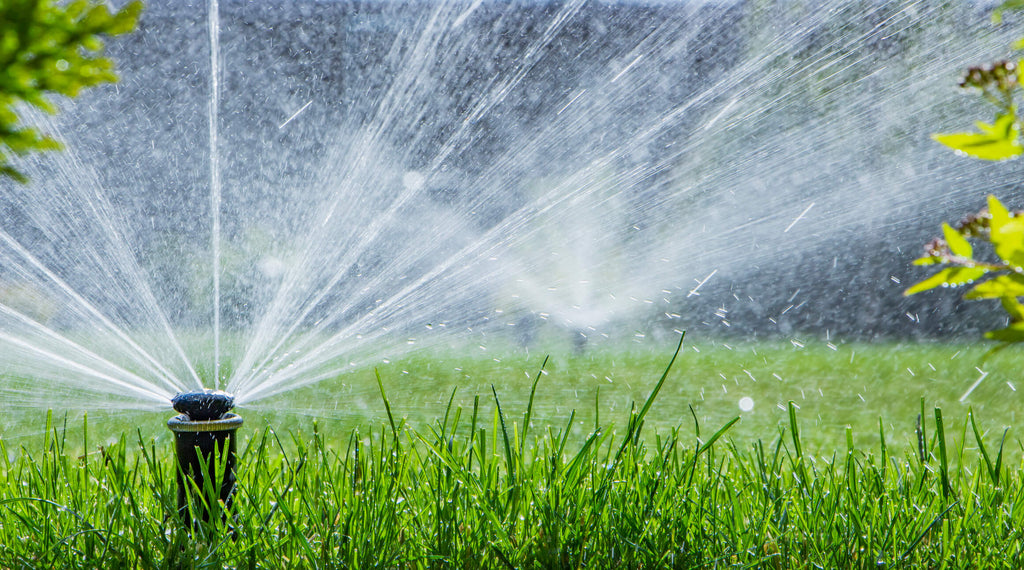
Rainwater harvesting is a simple yet highly effective way to conserve water and manage rainwater runoff. With a rainwater harvesting system, you can collect rainwater from your roof and store it for future use. The water can then be used for irrigation, landscape maintenance, or other non-potable uses, reducing your reliance on municipal water sources.
These systems vary in size, with options for small rain barrels or large underground tanks. For larger yards, a more extensive rainwater harvesting system with multiple collection points may be ideal. The system can be designed to automatically distribute water to your garden, keeping your plants hydrated even during dry spells.
Harvesting rainwater is an excellent solution for eco-conscious homeowners who want to reduce water waste, lower their water bills, and maintain a sustainable garden. It’s a smart investment for those looking to manage rainwater while helping the environment.
18. Install a Rain Garden Swale for Better Water Distribution

A rain garden swale is a shallow, concave area designed to manage rainwater runoff and distribute it evenly throughout your yard. It can be used in combination with other rainscaping techniques like rain gardens or dry creek beds to create a more effective water management system. The swale captures water and directs it towards areas that can absorb it, such as plants or soil, reducing runoff and preventing erosion.
By planting native plants along the edges of the swale, you help to filter and cleanse the water as it moves through the landscape. These plants are adapted to the local climate, making them low-maintenance and drought-resistant. Swales are perfect for sloped yards or areas with poor drainage, and they help to slow down the flow of rainwater, reducing the risk of flooding.
With their natural beauty and functional design, rain garden swales can enhance your yard’s drainage system while creating an aesthetically pleasing outdoor feature.
19. Plant Drought-Tolerant Plants to Reduce Watering Needs

Drought-tolerant plants are an essential part of any rainscaping design, especially in regions with irregular rainfall patterns or frequent dry spells. These plants are adapted to conserve water, making them perfect for creating an eco-friendly, low-maintenance garden. By incorporating drought-resistant species into your landscape, you can reduce the amount of water needed for irrigation and minimize water runoff.
Succulents, cacti, lavender, and ornamental grasses are just a few examples of drought-tolerant plants that thrive in dry conditions. These plants are often hardy, requiring minimal watering and maintenance while offering a stunning visual impact. Their deep root systems help them survive in arid conditions, making them a great addition to any rain garden or drought-tolerant landscape.
Planting drought-tolerant species not only conserves water but also contributes to a more sustainable, resilient landscape that can withstand changing climate conditions.
20. Incorporate Vegetative Buffers Along Waterways for Erosion Control

Vegetative buffers are strips of native vegetation planted along waterways or drainage areas. These buffers act as natural filters, absorbing excess rainwater and reducing the speed of water flow. By planting grasses, shrubs, and trees along the edges of water features, you help prevent soil erosion and reduce the impact of stormwater runoff.
Vegetative buffers provide additional benefits, such as improving water quality and offering habitats for wildlife. They also create a more natural, appealing landscape by softening the edges of streams, ponds, and ditches. The plants in the buffer area help stabilize the soil, preventing it from washing away during heavy rains.
If you live near a waterway or have an area prone to erosion, vegetative buffers are a great way to reduce the impact of rainwater while enhancing your landscape’s beauty.
21. Create a Natural Water Feature to Manage Runoff
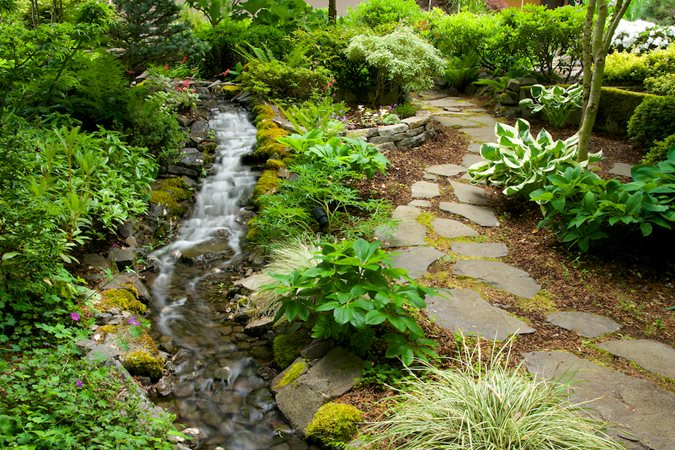
Natural water features, such as ponds or streams, are excellent at managing rainwater runoff while adding a tranquil and beautiful element to your yard. These features can be designed to collect and store rainwater, which is then used to create a peaceful, flowing water system. Incorporating native aquatic plants into the feature helps filter the water and improve water quality.
Natural water features can range from small decorative ponds to larger backyard streams, depending on your space and budget. The gentle sound of flowing water adds a calming ambiance, and the feature can be designed to complement your existing landscaping style. You can also add rocks, waterfalls, or fountains to enhance the visual appeal and functionality of the water feature.
A natural water feature is a beautiful way to manage rainwater while creating a serene and relaxing space for your family and guests to enjoy.
22. Build an Infiltration Basin to Capture Stormwater
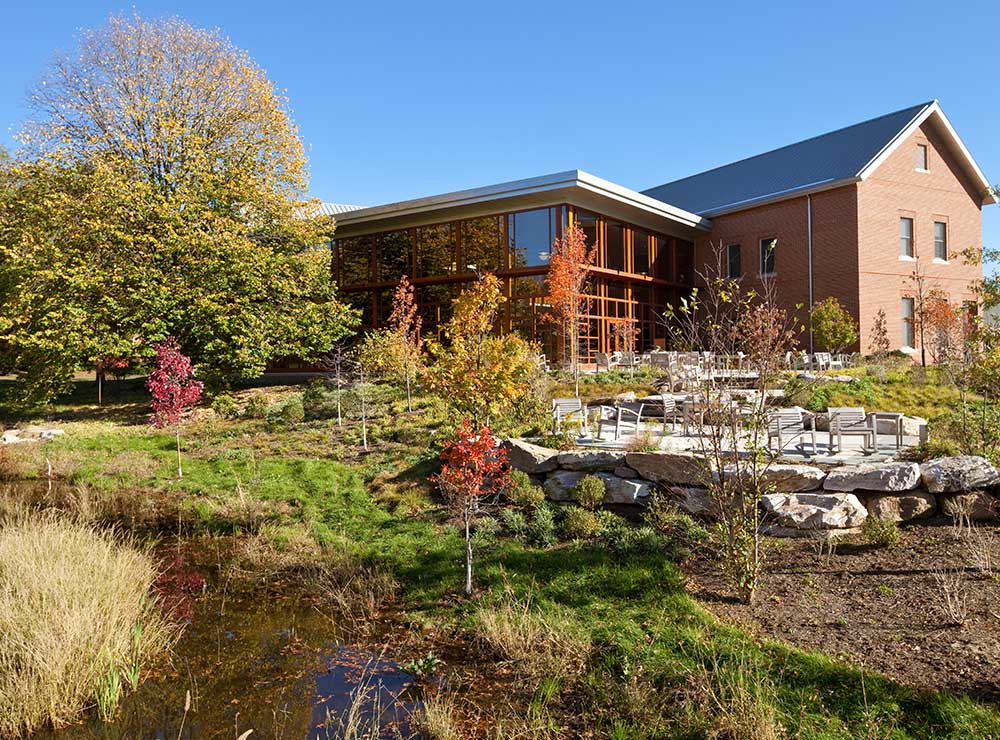
An infiltration basin is a depressional area that captures stormwater runoff and allows it to soak into the ground. These basins are especially useful in areas where water tends to accumulate after rainfall, helping to prevent flooding and erosion. Infiltration basins are often planted with native grasses and plants that help absorb the water and improve water quality.
These basins work by temporarily holding the water in the basin before allowing it to gradually infiltrate the soil. The plants in the basin help filter out pollutants, improving the overall water quality as it moves through the landscape. Infiltration basins are low-maintenance and can be designed to fit seamlessly into your garden.
Building an infiltration basin is an effective way to reduce stormwater runoff while creating a beautiful, functional landscape feature.
23. Use Mulch to Retain Moisture and Control Erosion

Mulch is an essential tool in any rainscaping plan, as it helps retain moisture in the soil, reduces runoff, and prevents erosion. Organic mulch, such as wood chips, bark, or straw, can be spread around plants and garden beds to protect the soil from the effects of heavy rainfall. It also helps regulate the temperature of the soil and keeps plants hydrated during dry spells.
Mulch acts as a natural barrier, slowing down the movement of water across your landscape and allowing it to be absorbed more efficiently. Additionally, mulch breaks down over time, enriching the soil with organic matter and improving its structure. Whether used in garden beds, around trees, or along pathways, mulch is a versatile and essential element of any sustainable landscaping plan.
By incorporating mulch into your garden, you’ll help retain moisture, control erosion, and maintain a healthy, thriving landscape.
Conclusion
Rainscaping is an innovative and eco-friendly approach to managing rainwater while enhancing the beauty of your outdoor space. By incorporating some of these 23 rainscaping ideas into your landscape, you can transform your backyard into a sustainable oasis that handles heavy rainfall efficiently. Whether you’re creating a rain garden, installing a permeable walkway, or incorporating native plants, each idea offers a practical and aesthetic solution to rainwater management.
By taking a proactive approach to your landscape design, you not only reduce runoff and water wastage but also create an outdoor environment that’s more resilient to weather changes. These rainscaping ideas will help you build a space that works with nature, creating a beautiful, functional outdoor area that you can enjoy year-round.

